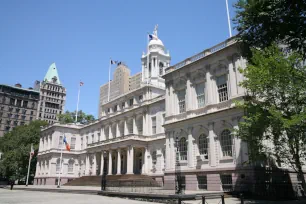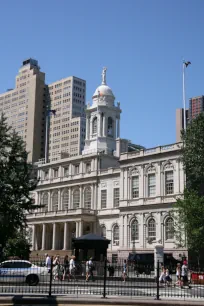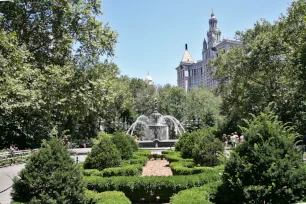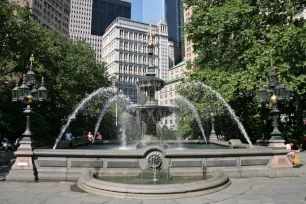A designated New York City landmark and listed on the New York and National Registers of Historic Places, City Hall is one of the most treasured buildings in Manhattan.

Located in Lower Manhattan between Broadway and Park Row, New York’s City Hall is full of wonderful U.S. history and its architecture has been praised by a wealth of experts in the field.
History of City Hall
When it became time for the city of New York to replace their old city hall, built in 1700 and located at Wall and Nassau Streets, government officials held a competition to determine who would design the building. The winners were a pair of gentlemen – one American, one French – who never again collaborated on a building project.
The design of John McComb, Jr. and Joseph Francois Mangin was chosen in 1802 and the architects were awarded $350 for their winning drawing. According to records, construction was due to begin immediately, but many believed that the city was spending too much money for the project. Changes were eventually made (the size was reduced and brownstone replaced more expensive materials) and construction began the following year.

The building was completed in 1811 and celebrated its official opening in 1812. Throughout the years, City Hall and the park in which it sits have been the site of many city and national events. Both Abraham Lincoln and Ulysses S. Grant were laid in state in the rotunda of New York’s City Hall.
Architecture
City Hall is a blending of two distinct periods of architecture. While the inside can best be described as American Georgian, the exterior is decidedly French Renaissance, probably Mangin’s influence.
A central pavilion is flanked by two projecting wings. A long stairway leads up to the main entrance at the center, and these steps have been the sight of many important events throughout the last two centuries. The columned entrance portico is capped by a balustrade, and another balustrade is found at the roof. The domed tower in the center was last rebuilt in 1917, following two serious fires. The exterior of City Hall is clad with Alabama limestone above a Missouri granite base.
Inside, visitors will find a spacious rotunda, reached by ascending a grand marble staircase. On the second floor, Corinthian columns support the dome.
City Hall Park

New York’s City Hall is situated in a small park, the City Hall Park. In the seventeenth century, it was just a pasture at the edge of the city, known as the Commons. Over the years several buildings were constructed here, among them a prison, a museum, a post office and a city hall. The city hall is the only building remaining today.
The pasture played a significant role in the life of colonial New York. This was also the site of the first public protest against the British. Already in 1766 the first ‘Liberty Pole’ – a symbol of resistance – was erected here. A replica of the pole is now located near Broadway.

In 1871 a large fountain was installed in the park, the Jacob Wrey Mould Fountain. It would be replaced by the Civic Virtue Fountain in 1922 which in turn was replaced by the Delacorte Fountain in 1972. The original fountain was put back in place after a renovation in 1999. There are a number of other monuments in the park besides the fountain, such as a statue honoring colonial patriot Nathan Hale, who was hanged by the British in 1776.
Thanks to a renovation in 1999 City Hall Park is a surprisingly pleasant park in the middle of this bustling part of Manhattan where you won’t find much green space. A central pathway leads along shrubbery bordered by benches. At the entrance of the enclosed park is a plaque with a brief description of the park’s history.

